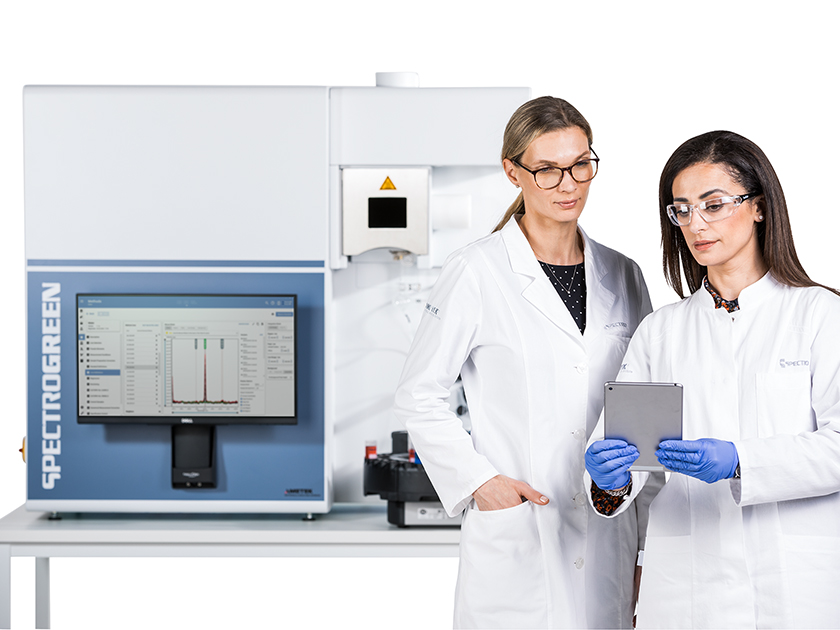Inductively coupled plasma-optical emission spectrometry (ICP-OES) instruments are used for elemental analysis.
In the industrial world, such devices help manufacturers gauge the quality of their raw materials and finished goods. They also ensure proper sterilization procedures are carried out in the manufacturing process and ensure that final products meet requirements. Keep reading to learn more about how they work.
What Is Inductively Coupled Plasma-Optical Emission Spectrometry?
Inductively coupled plasma-optical emission spectrometry (ICP-OES) is a powerful technique capable of detecting almost all elements from sodium to uranium. It is characterized by a relatively high degree of sensitivity, precision, and accuracy and can be used to analyze a wide variety of sample types.
What Are the Applications for ICP OES Instruments?
Inductively coupled plasma-optical emission spectrometry (ICP-OES) is an emission spectrometry used to identify elemental composition. This technique is an analytical chemistry method that uses the intensity of light emitted from a plasma source to measure the concentrations of an element in a sample.
Generally, ICP-OES is used for:
- Environmental analysis – measuring toxic metals in water and soils.
- Metallurgical analysis – such as alloy identification and verification.
- Medical analysis – monitoring trace elements in human blood or tissues.
- Petroleum industry – to determine the composition of petroleum products and their fractions and pollutants and residues in fuels.
- Environmental testing – to monitor wastewater discharge and other effluents, soils, sediments, and wastes (e.g., leachates from landfills).
- Pharmaceuticals – for quality control in pharmaceutical production.
How Do ICP OES Instruments Work?
ICP-OES instruments usually consist of four main parts, which are the:
- Detector
- Sample introduction system
- Spectrometer
- Excitation source
ICP-OES instruments use a peristaltic pump for conducting samples using nebulizers and spray chambers. After aerosol conversion, it will be fed into argon plasma through a cooled induction coil. This will start the alternating magnetic field and carry out the excited electrons into circular trajectories. Then the electrons will collide with argon atoms and result in ionization.
The plasma at this time is very hot and can reach up to 10,000 K throughout the induction zone. Next, the electrons will absorb thermal energy and later reach an excited state to release photons of light energy while they return from their normal condition.
Finally, the photon’s spectrum will be measured using a spectrometer. Spectrometers can determine elements from their individual spectrums and then assign each value.
How to Calibrate an ICP-OES Instrument?
The calibration of any ICP-OES instrument is the first step in ensuring accurate and repeatable measurements. Its process includes the following steps:
- Ensure that the instrument is in good working order and that all lenses, mirrors, and other optical surfaces are free from contamination (e.g., dirt or fingerprints).
- When using a PerkinElmer ICP-OES system, run the “Probe Check” to ensure a stable plasma and check for any issues with the nebulizer that may have been missed during routine maintenance.
- Use an appropriate wavelength calibration standard to generate a calibration curve for each analyte measured using the selected sample preparation protocol.
- Perform a linearity check by measuring two or three standards at different concentrations near the center of the detector’s dynamic range for each element. This will allow you to verify that linearity is maintained over a range of concentrations for each element and provide some additional data points to check against your calibration curve.
What Are the Benefits of ICP-OES Instruments?
ICP-OES instruments have a few major benefits over other analytical technologies. They include the following:
High performance
ICP-OES offers the highest analytical sensitivity and best detection limits of any technique able to measure multi-elements in solution.
The superior sensitivity and detection limit performance of ICP-OES makes it possible to analyze trace elements at low concentrations and elements with low spectral emission lines.
Ease of use
ICP-OES requires easy sample preparation. Most solid samples require only dissolution using acids. Some liquid samples are analyzed directly.
ICP OES Instruments Are Powerful
The ICP OES instruments are powerful analytical tools for various applications and industries. They are designed to provide the highest productivity, accuracy, and reliability.
Each system is built up with the user in mind, featuring intuitive software, touch screen operation, and a simple interface to eliminate errors and reduce training time.









